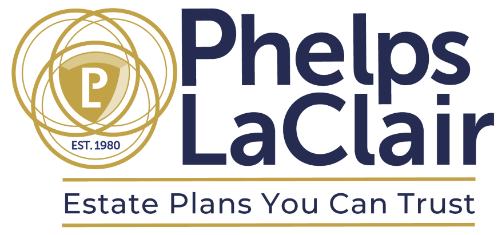
04 Apr A Tax Saving Strategy
Estate planning is focused on preserving the wealth you have built so that when you pass it on, future generations can benefit. At Phelps LaClair, a second generation estate planning law firm, we are continually looking for ways to save our clients money. One of the easiest ways is to take advantage of tax savings offered by the government. Charitable contributions that are tax deductible are helpful financial instruments for the giver as well as the receiver.
Pre vs. After-Tax Contributions
If you are taking funds from your checking or savings account and giving directly to your favorite charity, you are giving an after-tax contribution. Under the new rules of the Tax Cuts and Jobs Act of 2017, your itemized deductions would need to be more than the standard deduction of $12,000 for a single person or $24,000 for a married couple. Most people will never reach the standard deduction allowance, so their charitable contributions will not yield a tax advantage.
Donor-Advised Fund
With a donor-advised fund (DAF), you can donate funds now and receive a tax deduction for them. The fund will then grant those donated assets to the specified charity at some point in the future. It works in a similar fashion to a foundation. You can donate cash, securities or property to the fund and receive an immediate income tax deduction. The fund will grant the donations to the charity either now or at some future time.
Common Misconceptions about a Donor-Advised Fund
- It’s only for the very wealthy. The truth is, you don’t need to be a millionaire to set up a DAF. It’s not complicated and doesn’t carry an exorbitant cost. It works best with assets that have greatly appreciated in value since you acquired them, but it allows you to give modest or substantial gifts as often as you like in any year.
- All the funds must be given away in the year of contribution. Actually, the time when the fund distributes assets is totally up to you. You can make a large contribution in one year and set the amount to be distributed over a period of future years.
- You will have less control than with a foundation. A DAF affords you as much control as you need. In addition to setting distribution times, you can add, subtract or change charities at any time, as long as the organization is a 501(c)(3).
- A DAF cannot grow in value. You can choose the type of investment model for your contribution. Whether you choose to contribute a high risk, high yield portfolio or a balanced portfolio is entirely up to you. You determine the likeihood of your investment to grow over time.
Call us for a consultation.
Any investment is a risk, with the potential to gain or lose value. This includes the loss of principal, as well. At Phelps LaClair, we have decades of experience in strategies to maximize tax savings and develop sound financial planning. We strongly advise you to come for a consultation to see if a donor-advised fund is the right instrument for you. If this is your first consultation with us, there is no charge and no obligation. We have offices in Chandler, Mesa, Phoenix, and Scottsdale. Call for an appointment today, and begin to take advantage of all potential tax savings available to you.
Images used under creative commons license (Commerical Use) 04/04/2020 Photo by Sarah Pflug from Burst


